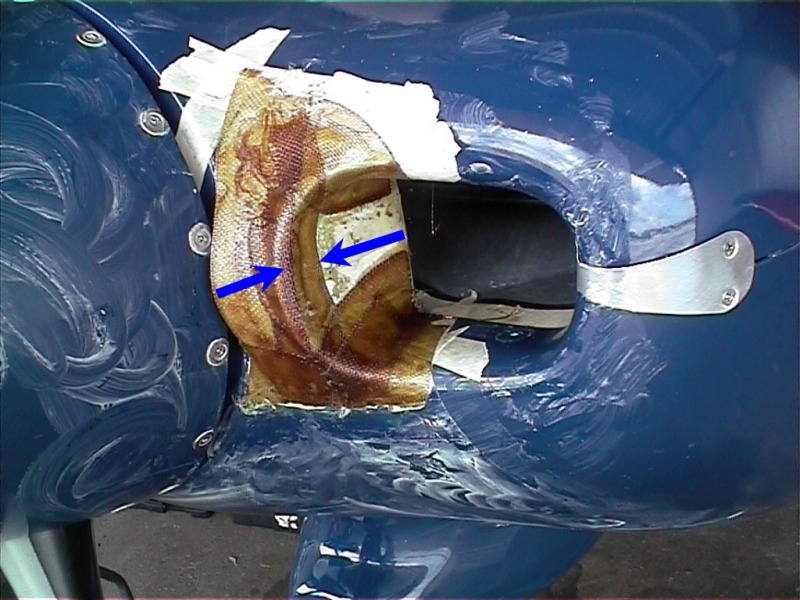KEEP TESTING AND TESTING!!!!!!!!!!
Hey Bob,
Keep seeking and working with what your doing, I?ve got my thumbs up for you as I?ve been there and done the trial and error thing with testing and trying this and that. I understand the time thing, many hours, weeks, months of testing, family time and money.
To date with everything I?ve done with the cooling / speed mods on my RV-6 have been trial and error. What I post or share is at everyone?s own risk and I take no responsibility. I?m only sharing what works on my grocery getter RV
An update with my setup: Cowl inlets are 2.750? round each with around a 5-7 degree diffuser angle that extend into the plenum for about 8? average. Left inlet is longer than the right because of the cylinder spacing. The work inside the plenum is very important!
July 4th , 2007 I took a short flight in 100F air on the ground to Dodge City, KS from my base airport of 2,500ft. After takeoff, I ran at 24.5? and 2,550 RPM till I reached 11,500 ft in about 6 minutes+. After around the 9,000 ft mark I was making 21.5? MAP. Fuel mixture was kept at 125F rich of peek on the climb out. Indicated airspeed was kept at 125-130 mph from takeoff too 11,500ft. The air temp at 11,500ft was 65F. Yikes,,,, not that cool, but better than 100F on the ground.
The highest CHT was 365F on climb out and the oil temp peeked at 190F when I leveled off at 11,500ft. This is like hanging it on the prop with Spam cam cruise speeds in cruise and working the engine.
At cruise speed after a few minutes, the CHT's were in the 325F range at 11,500ft with 65F air.
I?m not trying to brag or whatever, but it takes much work to get an RV to keep within these limits. I?m running a true 10:50 comp ratio Angle Valve IO-360A1B6 making 200HP++ with Slick Mags set at 20 degrees of advance,,,,, no electronic ignition etc.?and as most people know this engine can sometimes be a tuff cookie to stay in the green range at times.
Attached are a couple of pictures of my diffusers/cowl inlets. Not posted are pictures of the inside of the plenum, as I have none. Kind of hard to take pictures inside of a dark cavern where a bear lives while he?s hibernating?.LOL
Keep testing and testing within reason. I?ll be at Oshkosh this year and I?ll have the cowling off my ?6 if anyone wants to look OK. I have nothing to hide as I?d like to help anyone with cooling problems.
BTW. Humm OK speed gain that I?ve seen between a stock Bernard/James cowling/plenum and my changes are about 3 knots?. Wooooooh. Not much but 3 knots is 3 knots. These test have nothing to do with a stock RV cowl!!! All prior tests many years ago were done with an OEM Barnard////now Sam James stock plenum and cowl. The upper plenum, cowl inlets, lower cowl mods, diverters , diffusers have been changed from the OEM manufacture. What has been done is my design and is altered. Test and try at your own risk.



























